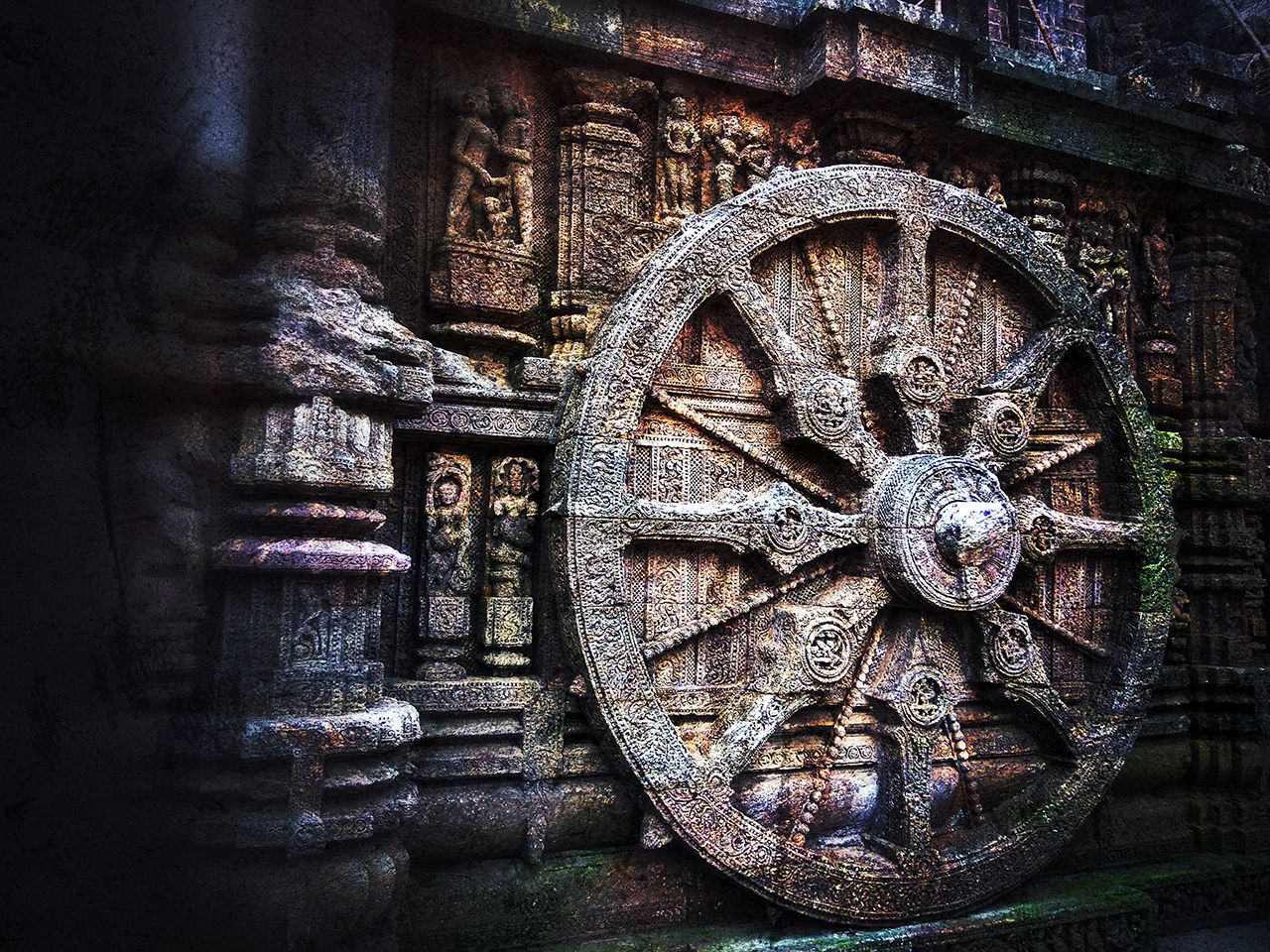How Sanskrit, a 5000 Year Old Language of God, Contributes to Brain Development and a Bright Future
Language can be a compelling tool for self-expression and self-exploration. It goads us to think differently; a few words can challenge us with new concepts. Etiquette, finesse in thinking, fostering a sense of belonging with a community, cultural identity… this is just the tip of the proverbial lingual iceberg. Language, it seems, can also prepare us for the future.
My explorations to understand this process began at a Sanskrit class.
It was a unique, privileged opportunity; I was over the moon. My initial excitement, however, soon melted away as my struggle with the pronunciation gained larger prominence. In a class of 20 students, it soon became apparent that I was slower as a learner with incorrect pronunciations.
I took solace in Dr. George Washington Carver. The famous American inventor and botanist had once said: ‘Anything will give up its secrets if you love it enough.’ With practice, patience, and persistent support from my comrades, I marched ahead and conquered the horizon when I mastered a few pages.
Though this class was perhaps one of the most gratifying experiences that I’ve ever had, I did notice the glaring differences between the rest of the group and myself. They were seasoned in little Sanskrit phrases, and could fluently rattle off odes to the entire pantheon of the Gods in smooth Sanskrit while I would pipe in with a few words. What is this journey that each of us has made with the oldest surviving classical language, Sanskrit?
### Here we are
Sanskrit is perhaps one of the only classical languages that has survived in its purest form. So deep is her fame, it’s almost instinctive to personify Sanskrit as a queen. I see her resplendent in jewels, dignified, wise, and bestowed with magical powers.
“Language is connected to our consciousness. Listening, speaking, and reading Sanskrit is nourishment to the mind,” says Sanskrit enthusiast, Dr. Manikantan Menon, who is also a musician and the director of ALAP (Art of Living Academy of Performing Arts). “It helps to remove stressful impressions, and soft values start coming back to you.”
Sanskrit is considered to be the mother of all languages. It’s a common belief that each language in our global time was born from Sanskrit. Unfortunately, the umbilical cord seems to have been cut off there.
Though many pundits would defend the relevance of Sanskrit in our modern times, there are others who insist the language is archaic – besides being a Herculean task to master. Many schools in India have made Sanskrit compulsory for three years at least – though the numbers opting for higher education are fewer.
“It’s not that children don’t like Sanskrit,” shares a school teacher in a government school in Dhule, Maharashtra. “They don’t always get peer support to pursue higher education.” In fact, this teacher opines that children find it easier to learn Sanskrit since many of them join their families for daily prayers.
So loud is the children’s demand for Sanskrit in a little town in Maharashtra that the school periodically invites outside teachers for guest lectures.
### Ideals for life
And then there are schools and universities outside of India that are famed for giving Sanskrit learning a much-required boost. The St. James School in the United Kingdom has been an ardent proponent of Sanskrit, having introduced the language as a subject in 1975. While students could learn Sanskrit for a few years and then decide if they would like to pursue it, the teachers there believe that Sanskrit leaves an indelible mark.
Consider this: the Sanskrit word for beggar is bhikshu – which means a venerated person – a contrast to the image that the word ‘beggar’ brings to mind. Victory in Sanskrit is jaya, while a loss is parajaya, which means the victory of the other.
Quoting Rutger Kortenhorst, a Sanskrit teacher at the John Scottus School in Dublin: “The qualities of Sanskrit will become the qualities of your child – that is the mind and heart of your child will become beautiful, precise and reliable. Sanskrit automatically teaches your child and anybody else studying it to pay FINE attention, due to its uncanny precision.”
Sanskrit enthusiasts point to the vast linguistic and cultural access that the language gives them. However, there’s more.
### When NASA gives Sanskrit a shout out
“Sanskrit and computers are a perfect fit. The precision play of Sanskrit with computer tools will awaken the capacity in human beings to utilize their innate higher mental faculty with a momentum that would inevitably transform the mind. In fact, the mere learning of Sanskrit by large numbers of people in itself represents a quantum leap in consciousness, not to mention the rich endowment it will provide in the arena of future communication.”
~ NASA, California
### How does the study of Sanskrit affect the brain?
A hallmark study by Dr. Hartzell, a Sanskrit proponent and postdoctoral researcher at Spain’s Basque Center on Cognition, Brain and Language, showed the world a new picture. Dr. Hartzell and the team at India’s National Brain Research Center scanned the brains of 21 Sanskrit pandits and 21 control subjects.
“India’s Vedic Sanskrit pandits train for years to orally memorize and exactly recite 3,000-year-old oral texts ranging from 40,000 to over 100,000 words. We wanted to find out how such intense verbal memory training affects the physical structure of their brains,” said Dr. Hartzell.
The structural MRI scanning showed:
- Numerous regions in the brains of the pandits were dramatically larger than those of controls.
- Both the cerebral hemispheres had over 10 percent more grey matter.
- Significant increase in cortical thickness.
- The right hippocampus had more grey matter than the brains of the control subjects. The hippocampus plays a vital role in short-term and long-term memory and is a center for sound, spatial and visual patterns.
- The right temporal cortex, associated with speech prosody and voice identity, was also substantially thicker.
- The increase in all these metrics corroborates with enhanced cognitive function.
It’s no surprise that children who learn Sanskrit display some marked parameters, including improvement in speech, logical thinking, and memory retention.
### Prepare for 2026 now
With artificial intelligence becoming a buzzword, it’s necessary to look at our futures differently. Jack Ma spoke about it at the World Economic Forum 2018 when he said that our teaching methods needed to change and we needed to develop soft skills.
A survey done by the World Economic Forum’s Global Agenda Council on the Future of Software and Society shows people expect artificial intelligence machines to be part of many companies’ board of directors by 2026.
Interestingly, emotional intelligence, which doesn’t feature in the top 10 marketable skills today, will become one of the top skills needed by all.
### List of skills required by 2020 (Source: World Economic Forum):
1. complex problem solving
2. critical thinking
3. creativity
4. people management
5. coordinating with others
6. emotional intelligence
7. judgment & decision making
8. service orientation
9. negotiation
10. cognitive flexibility
Learning Sanskrit could be one way to train our minds to sharpen their innate power. In fact, it could strengthen existing brain training exercises to help yield maximum results.
### Start small
Dr. Manikantan believes that we’re at a unique threshold and could be witnessing the revival of Sanskrit language. “A few decades ago, it was more fashionable to learn international languages, while recently the thrust has been towards Sanskrit, again.” He believes that every child from the age of four years should learn the language, since it aids in developing the brain, the nervous system, and the mind.
He recommends:
1. Have patience: Initially, the language might seem a little difficult. However, it’ll become easier with some regular study, and practice.
2. Tune into Sanskrit radio channels or look up YouTube for Sanskrit news channels. Simply listening to the language will enable one to follow it easily.
3. Start a Sanskrit group that meets once a week. Discuss what everyone is reading, chanting, and learning.
4. Introduce a few Sanskrit words in your everyday talk at home. Getting used to the everyday conversation will make it easier.
5. Chant some Sanskrit shlokas every day. Read the original Sanskrit text, instead of the English or Hindi translations, even if it takes a little longer.
6. Pay attention to the correct pronunciations. Initially, the practice might require time, but it can be mastered easily.
7. Sanskrit is self-energizing and must regularly be practiced.
Perhaps our future selves would thank us for recognizing the legacy and richness of the ancients. Our forefathers have given us the gift of Sanskrit and we have the good fortune of being the torchbearers. Perhaps then, we’ll be truly prepared to face our future.
This article first appeared on The Art of Living website.
Written by Ms. Resha Patel (based on inputs from Dr. Manikantan Menon, musician, director of Art of Living Academy of Performing Arts, and Art of Living faculty)

